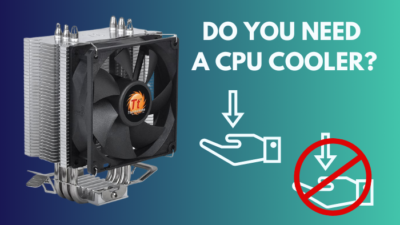If you find out that your CPU is reaching risky temperature levels while running your computer, your fans are not working properly.
In this situation, you can change your CPU cooler or replace the fan. Replacing the fan is typically favorable since it’s budget-friendly.
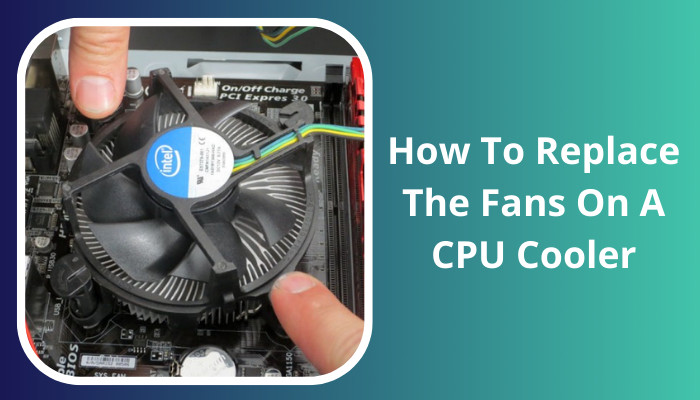
So, to know which fans you can use to replace the fan on your CPU cooler and how to do it, go through the content of this guide.
Can You Replace the Cooling Fans On Your CPU?
Yes, you can replace the fans on your CPU with a new one without purchasing a new cooler, but the replacement fans should be compatible with the size of your cooler. Moreover, the replacement fan must have a connector that allows its speed to be controlled.
Not all CPU cooler fans and case fans are the same. They can be different in size and working RPM and have different fan connectors.
If money is not an issue, replacing the CPU cooler may be possible, but it’s surprisingly difficult to remove.
The fan on your cooler is mounted with the aid of screws. If you are going to replace it, it must be done using another fan of the correct size. Otherwise, you won’t be able to screw the new one in, as the screw holes will not align with those in the cooler.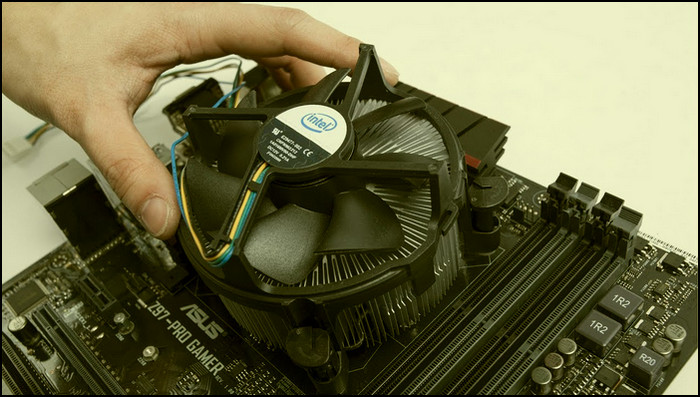
The size of the fans are also important to ensure the previous heatsink fits the new fan properly.
Another point to keep in mind is that only air coolers have replaceable fans. If you are using a liquid CPU cooler, then there aren’t any fans to replace in the first place.
Some older models of fans do not have a connector for controlling the speed. For a modern PC build, you must use fans on your cooler whose speed you can control.
Where can you get the right fan to replace your malfunctioning cooler fan? You need to purchase one by checking its specifications first and matching them with those of your current cooler fan. You can also use an old, spare cooler fan instead if you have one lying around.
Also check our exclusive tutorial on why are Motherboards green.
How To Replace The Fans On Your CPU Cooler?
Replacing the fans on your CPU cooler is a demanding task, and it needs to be done carefully so that you do not damage any parts of the cooler or install the fan incorrectly. The process has been simply discussed here for you to go through and apply in real life.
The first thing you need to do is locate the CPU cooler in the computer casing. It is positioned right above your processor’s socket in the motherboard.
There are several types of CPU coolers available. The number of fans and the position of the fans in respect of the heatsink differs from cooler to cooler. Nevertheless, all CPU coolers allow you to take off and replace the fans on them.
Note the fans can be mounted either on top of the case or on the sides, so make sure to mount it in the same position as your old fan.
Follow these steps to replace the fans on a CPU cooler:
- Unclip the side panel coverings from both sides of the case holding it in place.
- Remove the ventilation system by pressing the clips and pulling the duct away if your CPU has one.
- Disconnect the fan power by detaching the fan’s connector cable from the motherboard.
- Unscrew the mounting bracket to take off the cooler.
- Unscrew any screws from the heat sink if you only want to remove the fan, without unlatching the heat sink.
- Take off all four screws connecting the fan to the CPU cooler.
- Remove the fan connector from the fan header.
- Remove the old thermal paste on your CPU by putting some isopropyl alcohol on a microfiber cloth and gently pressing it on the CPU.
- Apply thermal paste under your CPU cooler if necessary. Avoid applying new thermal paste if the cooler already comes with one.
- Place the cooler over the CPU and align it with the four corners where it was attached to earlier.
- Screw in the cooler, starting from a corner and moving to the corner diagonal from it.
- Connect the cooler to the power supply.
- Make sure the new fan faces the same way as your old fan.
- Align the fan’s screw holes and screw it in using a screwdriver, while holding the fan with one hand.
- Insert the new fan’s connector end to the fan header on the motherboard.
- Put on the side panels on the casing back again.
Don’t worry if the screws in the CPU cooler don’t come off easily. Just keep in mind that the backplate is needed to thread the screws.
It’s common to face unexpected issues after replacing a major component in your CPU. If you face issues like BIOS not detecting the fans, make sure to go through our epic guide.
Are you out of options regarding what to use as a replacement fan? You can use a case fan as your cooler fan, but it is not recommended. Learn more about case fans in the next section.
Can You Replace the CPU Fan Using Case Fans?
Using a case fan to replace your CPU cooler’s fan is possible, but it is not recommended. This is because case fans and other fans are different. Unless it is a temporary fix or emergency, you should not do it since a case fan cannot do the job of a cooler’s fan as efficiently.
Your computer’s case fans function at a lower speed than the CPU cooler’s fan. As a result, the volume of the air that they can push in is lower than what is required for cooling your CPU.
A CPU cooler is integral because your CPU produces a substantial amount of heat when it is turned on and running tasks on your computer. Without a functioning CPU cooler, the processor will reach unsafe temperatures that can cause your system to crash, suddenly enter a restart loop, or you may see a blue screen.
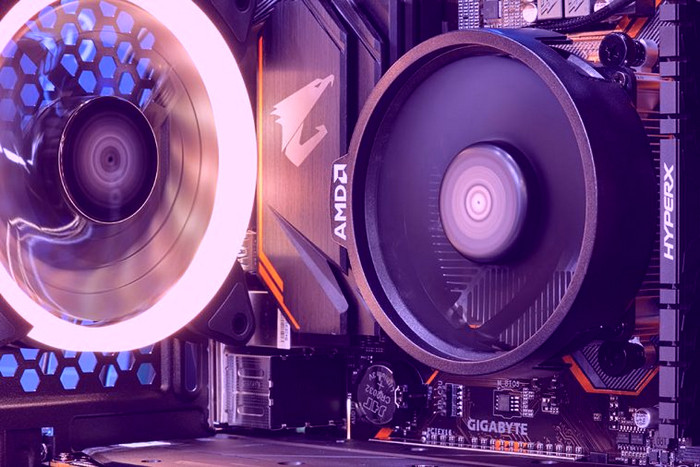
This system failure in your computer occurs because the excess heat produced by your processor causes damage to itself or the other parts around it.
So, it is necessary to have your cooler’s fan functioning all the time at the right speed to keep the CPU cool. If you replace your CPU cooler’s fan with a case fan, it won’t be able to push enough air necessary to provide the right level of cooling for your CPU.
Consequently, your CPU will become very hot under extreme workloads and may even reach a dangerous temperature level.
So, it must be clear to you now why it is not suggested to use a case fan to replace the CPU cooler fan on your computer. You can purchase suitable replacements for your cooler’s fan or use the fan from a spare, old cooler.
You should only use case fans as a temporary solution and never stress your processor with an intense workload while using that case fan to cool it.
Still confused about using case fans? Read our detailed guide on replacing CPU fans with case fans to make the right decision.
Get to know about the situations when you should replace the fans of your CPU cooler in the following section.
What You Need to Know Before Installing a New Fan
You need to know before installing a fan that your CPU needs sufficient cooling to keep it safe from damage. So, if you find that your CPU is reaching an abnormal temperature, the fan is not functioning as it should be, and that’s when you should change it.
If its temperature is unchecked, you won’t even realize when the fan malfunctions. This may lead to devastating results.
Whether your computer uses Intel CPU or AMD does not matter when it comes to temperature. The heatsink and integrated fans are solely responsible for those.
Before you think about replacing your fans, you can try to fix the issues on your current fan, which could possibly solve the cooling issue. As a result, read our solution for eliminating rattling fan noises and enhancing the air flow if your fan is too noisy.
Your CPU cooler has a crucial function in the running of your computer. If it fails, your whole system will fail, which could damage your processor and other components. For this reason, it is necessary to always ensure the CPU is properly cooled.
If you notice any discrepancy in your CPU’s temperature or the fan’s speed on your CPU cooler, you should immediately turn off your system and change the fan.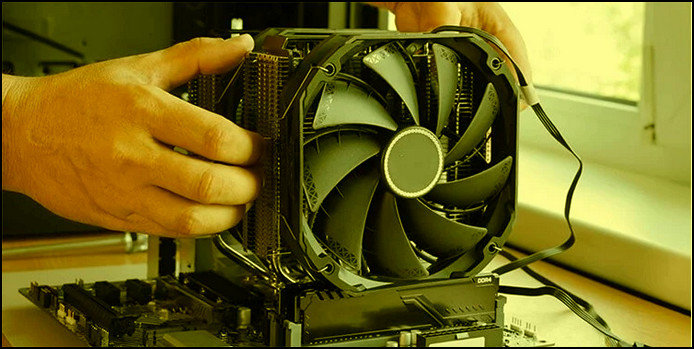
Here are the situations when you should change your fan:
- If you have been using your CPU for a long period of time, it may start malfunctioning. You need to change the fan in this case.
- While monitoring your CPU temperature, you need to replace your fan if it starts to overheat. This typically occurs when the temperature is above 90 degrees Celsius.
- When you turn on your computer, if you notice that your CPU fan is not rotating, you need to replace it.
- If your cooler is equipped with noisy fans, then it needs a replacement. A fan is considered to be noisy if the noise level exceeds 40dB.
Finding yourself in these dire situations is not favorable at all. If you see these happening to your computer, you should replace the fan on your cooler as soon as possible.
In the next section, I will disclose the process of replacing your dysfunctional CPU fan in easy wording. So, take a look at the steps you need before starting with the replacement to familiarize yourself with it.
Here’s a complete guide on how to know if CPU cooler is compatible with Motherboard.
How Does a CPU Cooling Fan Work?
A Fan is a device used to help keep the processor of a computer cool and it works by drawing hot air away from the CPU and releasing it outside the case. In order for it to work, it must be connected to a CPU fan header on the motherboard, which provides power to the fan motor.
There are two pin types available: 3-pin and four-pin. CPU coolers typically use 4-pin fans and are integrated with a PWM pin which provides high-efficiency control.
However, the majority of case fans come with 3-pin connectors and use voltage control for speed adjustment. Some more advanced systems may also include an All-In-One (AIO) liquid cooler with a dedicated fan controller for increased performance.
These pins connect to the holes or pins on the motherboard as that is their only source of power to work.
The direction of airflow, either inwards or outwards, depends on the design of the fan, but it’s usually directed at an angle so that both sides are kept cool.
Conclusion
The CPU cooler’s importance as a PC component is immense. No system is complete without it. If the fan on your cooler does not work, you should have it changed immediately.
As you go through this guide, you will learn about the fans you can use to replace your CPU cooler’s fan. You will also know when to replace the core fans of your CPU and how to do it properly.
Before you leave, check out our related content to prevent your fans from running in sleep mode so use them efficiently.
